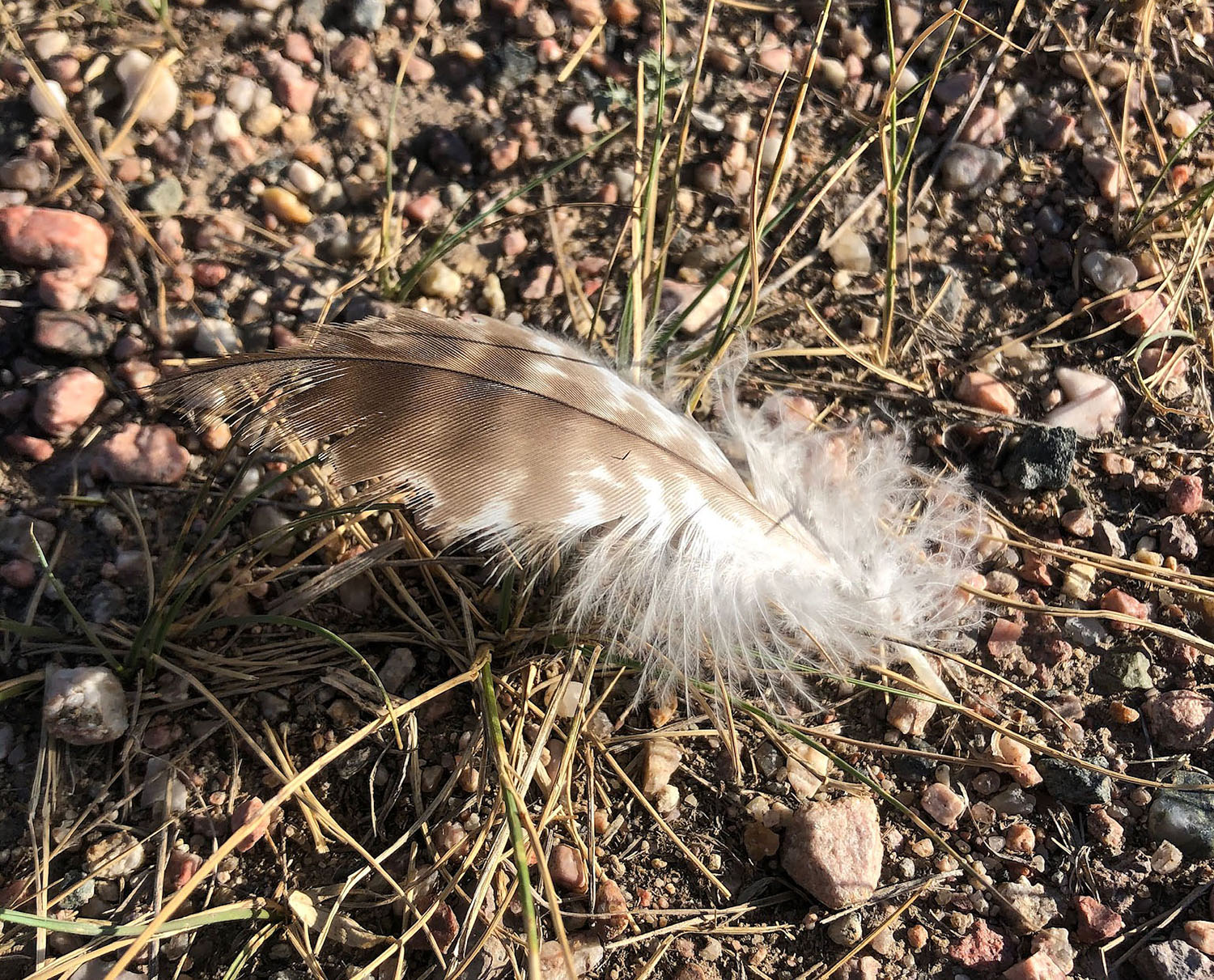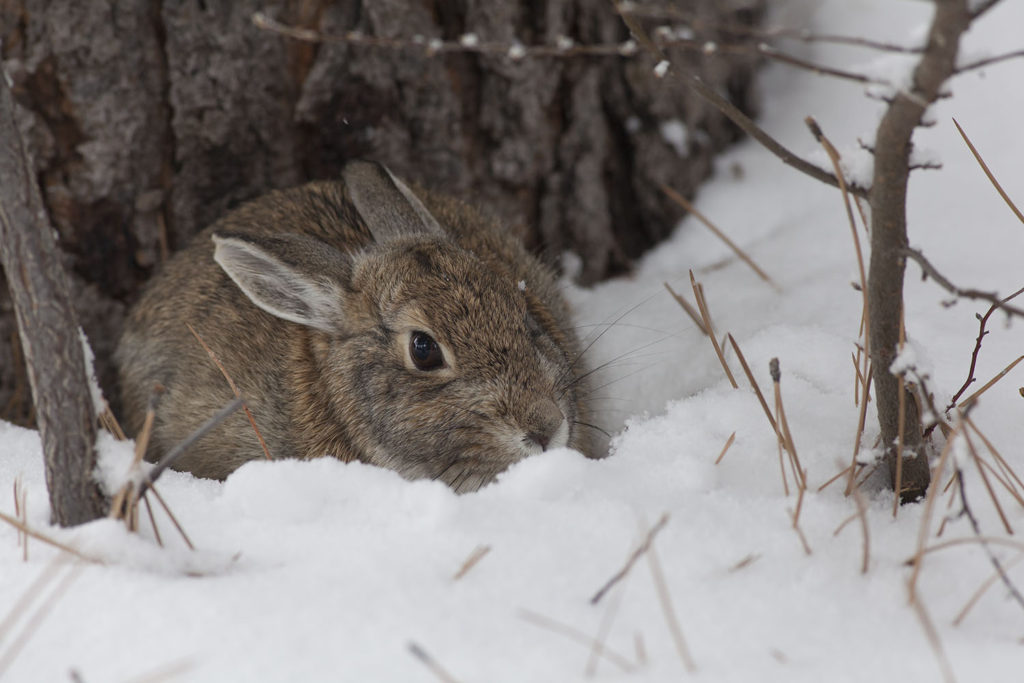
A great horned owl breast feather, molted in early August, showing severe wear on its margins. Photo copyright 2020, Chris Madson, all rights reserved.
HE MAY HAVE BEEN ROOSTING IN THE SPARSE COTTONWOODS ALONG THE CREEK AS FREYA THE BRITTANY AND I WALKED BY at the edge of town, an hour after sunrise, but I’d have expected him to fly as we approached, and a great horned owl on the wing is impossible to miss. Chances are he came through on the north breeze during the night, hunting as he went, then moved on.
Judging by the extreme wear on the breast feather, I figured its loss was part of the molt, not the result of an accident, and, considering the timing of the molt and relatively pale color of the feather, I took its previous owner to be a teenager, on his own for the first time. The gravy train of prey from mom and dad was over, I thought. He’s looking for his own groceries now.
That transition is tough on most young raptors. While they’re hard-wired for the business of hunting, there is an awkward time in their youth when instinct has to be translated into the practical, day-to-day— or in this youngster’s case, night-to-night— business of finding prey and reducing it to possession.
Possibly because of their imposing size and nocturnal habit, young great horned owls fare somewhat better than smaller birds of prey. One twenty-year study found that two-thirds of nestlings survived their first year. Having made it through that crucial primary education, three-fourths survived to celebrate their second birthdays. After that, an adult great horned owl may live more than twenty years. One owl banded as an adult lived another twenty-nine years wearing the bracelet.

Small mammals are a staple for great horned owls. Where they’re found, cottontails and jackrabbits make up the majority of the owl’s winter diet. Photo copyright 2017, Chris Madson, all rights reserved.
Great horned owls aren’t picky about their diet. They’ll eat worms, grasshoppers, and other small invertebrates when the opportunity arises, but mostly, they hunt mammals— voles and mice, generally, but cottontails, jackrabbits, ground squirrels, prairie dogs, wood rats, muskrats, opossums, ground hogs, marmots, raccoons, skunks, porcupines, and, in town, the occasional house cat.
On the avian side of the menu, great horned owls commonly take ducks, coots and rails, pigeons, starlings, other species of owls, and, occasionally, much larger prey. One study found the remains of an adult male osprey in an owl nest; another reported a great-horned owl taking an adult great blue heron. Great horned owls steal immature birds out of the nests of crows and ravens, goshawks, and red shouldered and broad-winged hawks. One study found that great horned owls were the leading cause of death among the nestling red-tailed hawks it followed; another found that barn owls comprised more than ten percent of the diet of great horned owls in eastern Washington.
Fearsome predators. But, as ferocious as they may be, they can’t survive without something to hunt, which may explain why the national survey of bird populations shows the number of great horned owls declining slowly but steadily since the mid-1960s. Great horned owls occupy a niche near the top of a complex food web stretching across the continent and beyond. Being an apex predator is always precarious, whether the hunter is a wolf, a polar bear, or an owl— a swaying perch at the top of an edifice whose foundation is a constantly shifting interaction of weather, plants, plant eaters, and the thoughtless hammer blows inflicted by 330 million self-absorbed humans. The trajectory of the hunter’s population says a lot about the condition of the system that supports it.
My best wishes go with this youngster. May he find a steady supply of food, both furred and feathered, enough to keep him in good condition for many years to come, enough to feed a mate and a long line of offspring. The feather he left is some slight reassurance, a sign that, as much damage as we’ve done to the land, it still gives shelter and sustenance to things wild and free.
—————–
Leave a Reply
You must be logged in to post a comment.